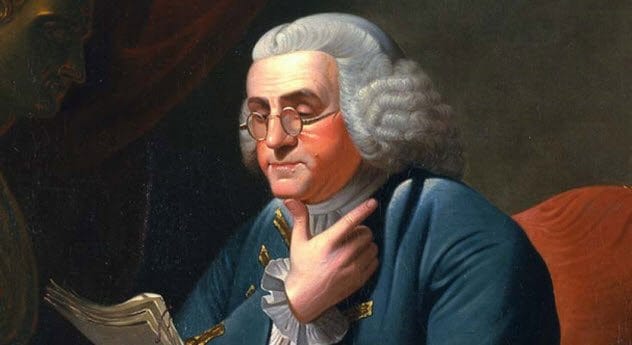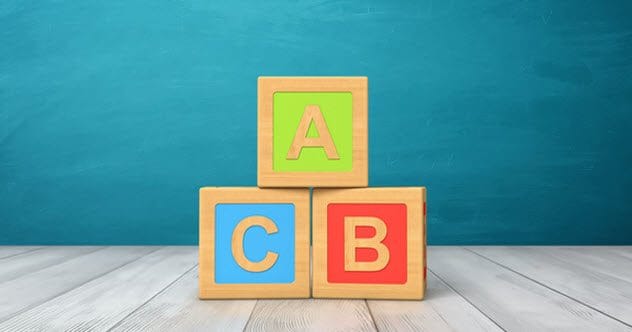Alphabet Overhaul: 10 Ways to Improve the English Language
Have you ever stopped to think about the letters we use every day? The English alphabet, with its 26 characters, has roots stretching back to the Phoenicians. But is it as efficient as it could be? Let’s dive into some intriguing ideas on how we might improve it.
1. Lose the Letter ‘C’

The letter ‘C’ often feels like a redundant character in the English alphabet. It essentially duplicates the sounds of ‘K’ and ‘S.’ Why keep it around? Its origins trace back to the Phoenician alphabet, where it was used more like a ‘G.’
Benjamin Franklin, a true visionary, even advocated for its removal, along with ‘J,’ ‘Q,’ ‘W,’ ‘X,’ and ‘Y,’ in his proposed new alphabet. Imagine writing “bak” instead of “back” or “kan” instead of “can.” It might look odd, but it simplifies things!
2. Ditch the Letter ‘Q’

Similar to ‘C,’ the letter ‘Q’ is rarely independent. It almost always buddies up with ‘U.’ The sound it makes can usually be replicated by combining ‘K’ and ‘W.’
Think about it: “quilt” could become “kwilt,” and “acquaintance” could be “akwaintance.” Words like “etiquette” could simply become “etiket.” The letter ‘Q’ has Greek origins, but perhaps it’s time to consider whether English still needs it.
3. Expunge the Letter ‘X’

The sound of ‘X’ can easily be replaced with ‘K’ and ‘S.’ “Exercise” could be “eksercise,” and “exit” could be “eksit.” Sometimes, ‘X’ even sounds like a ‘Z,’ as in “xylophone.”
The letter ‘X’ made its way from the Phoenician alphabet through Greek and Roman adaptations. Yet, even if ‘X’ may seem redundant, it’s hard to imagine a world without it. What would the X-Men be called? How would pirates mark their treasure?
4. Consider Axing the Letter ‘W’

Listen closely, and you might notice that the ‘W’ sound is essentially two vowels slurred together. The “wa-” in “water” sounds a lot like “u-ater.” Many languages reflect this; for example, “water” is “agua” in Spanish, pronounced “agwa.”
The letter ‘W’ evolved from the Latin ‘V.’ Normans adapted the Latin alphabet, giving ‘W’ a place in English. Could we manage without it?
5. Invent a Letter for ‘TH’

English spelling often combines letters to create sounds that neither letter makes on its own. Take ‘TH,’ for example. The ‘T’ sound is /t/ as in “ticket,” and ‘H’ is a voiceless /h/ as in “habit.” But together, they create a completely different sound.
Other languages, like Czech, have letters for sounds like /ch/, /sh/, and /zh/. Why not English? Historically, letters like thorn and eth were used for ‘TH’ sounds, and they still appear in Scandinavian languages.
6. Design a Letter for ‘SH’

Similar to ‘TH,’ the /sh/ sound is common enough in English to warrant its own letter. Instead, we use the digraph ‘SH’ to achieve the desired sound.
The symbol “š” is sometimes used to represent /sh/, especially in Slavic languages. The IPA uses “esh,” an elongated ‘s,’ which might feel more at home in English.
7. Conjure a Letter for ‘CH’

Another digraph, ‘CH,’ represents the /ch/ sound heard in “chance” and “catch.” The IPA combines ‘t’ and esh to represent this sound. Again, many Slavic languages use a single character for /ch/.
Spanish also uses ‘CH,’ but like English, it combines the two letters. Creating a single letter could streamline spelling and pronunciation.
8. Create a Symbol for “The”

We commonly use symbols like “&” for “and” and “@” for “at.” These symbols are convenient shortcuts for frequently used words. So, why not have a symbol for “the,” one of the most common words in English?
Paul Mathis, an Australian, proposed a character resembling a capital ‘T’ with the bottom of a lowercase ‘h.’ While it hasn’t caught on, it raises an interesting point about efficiency in written communication.
9. Clarify ‘G’ and ‘J’

The letter ‘G’ can make a /g/ sound as in “golf” or a /j/ sound as in “giraffe.” While English speakers learn the rules, it can be confusing, especially for learners. Words with German origins often use the /g/ sound, while those with Latin roots follow the soft ‘g’ rules.
Regulating the pronunciations of ‘G’ and ‘J’ could reduce confusion, but changing the existing rules might create even more chaos.
10. Decide: Is ‘Y’ a Vowel or Consonant?

Remember learning in elementary school that “Y” is sometimes a vowel? It sounds like a long “E” in words like “friendly” and a short “I” in “rhythm.” However, it’s clearly a consonant in words like “young” and “yellow.”
What if “Y” was given a definite place, most likely as a consonant? “Hymn” could become “himn,” and “scary” could be written as “scarie.” It’s a matter of context, but a definitive classification could simplify things.
Conclusion
The English alphabet, while familiar, is not without its quirks. From redundant letters to inconsistent sounds, there’s plenty of room for debate and potential improvement. Whether it’s eliminating unnecessary characters or creating new symbols, the possibilities are fascinating to consider. What changes would you make?
Leave your thoughts in the comments below!










